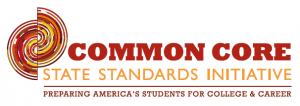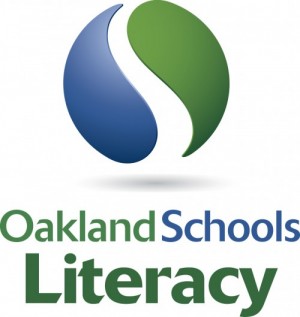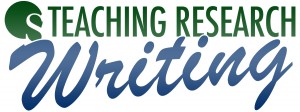 As a workshop-model Language Arts teacher, I am always searching for excellent mentor texts to guide students’ writing and reading. The hardest mentor texts to find are informational texts that are grade-level appropriate, as well as high interest in content.
As a workshop-model Language Arts teacher, I am always searching for excellent mentor texts to guide students’ writing and reading. The hardest mentor texts to find are informational texts that are grade-level appropriate, as well as high interest in content.
But there is a great new resource for Language Arts teachers at all grade levels: newsela.com, an online resource that can be upgraded through subscription. I want to share some information on the resource as well as some ways I used it during an informational reading unit to meet the needs of all my learners.
How the Program Works
Within Newsela, you can search topics, and you can refine that search to include grade levels or a particular Common Core State Standard in reading.
From this search, you’ll get a list of articles that have been redeveloped for kids at an appropriate age level. Each article has five levels. You’ll notice, for example, that 3rd grade and 4th grade titles have a statement of the main idea of the article and a lower word count. Eighth grade texts of the same article, on the other hand, have a more complex arrangement of text, as well as an increase of almost 200 words.
At the max level, which is the text as published in a newspaper, you’ll see more complex arrangements of text, as well as the use of advanced punctuation that is not part of the lower-leveled texts. Texts at the “max” level no longer include section headings, and while the word count remains similar to the 8th grade texts, the language is more abstract.
When citations are necessary, the author of the revised texts is always listed as “Newsela Staff,” and the article titles are not capitalized, which forces explanations for kids.
Within each grade-level text, you’ll also get four standardized-test-like questions: two for the CCSS standard you searched for, and two for another standard. All of the questions are labeled for the standards, so there is no guessing on the teacher’s part. These questions also vary slightly by grade level.
If you have the pro subscription, you can send the quizzes to kids’ devices, and you can gain their answers. Additionally, the pro subscription allows the teacher to assign articles, see who reads the article, and allows the students to annotate texts digitally.
Using Newsela in the Classroom
 For the informational reading unit in my classroom, I chose 8th-grade-level texts from Newsela. The students enjoyed the texts, which looked at: the use of fit furniture for increased movement; schools that use gardening programs to improve health awareness; and school elections and democracy. The texts from Newsela allowed me to create a text pack to use with kids. Since we review these texts together, all students used these 8th-grade-level texts.
For the informational reading unit in my classroom, I chose 8th-grade-level texts from Newsela. The students enjoyed the texts, which looked at: the use of fit furniture for increased movement; schools that use gardening programs to improve health awareness; and school elections and democracy. The texts from Newsela allowed me to create a text pack to use with kids. Since we review these texts together, all students used these 8th-grade-level texts.
Newsela next helped me align texts with informational reading standards, by suggesting a complementary standard for each of the texts I chose around our critical issue. The site also offered me multiple-choice reading questions for each article and standard.
As a class, we read the texts, while modeling reading strategies associated with the standard we were working on that day. Later, students practiced these same skills independently, using texts at their independent reading level with a critical issue of their choice. Newsela offered many resources for student reading materials.
As we read and practiced strategies with partners, I also formatively assessed students using the Newsela questions. Following this practice, we reviewed the features of the questions and the answers. We discussed why particular answers were correct, and how a question’s wording informed the type of answer that was desired. This practice was to give students more experience with test question language, not to get right answers.
In my classroom, this practice became a small competition with little stress for students. I also used these materials to assess my students in a summative way on the reading skills they learned during this unit. I provided personal texts for a student’s reading level, along with 8th grade assessment questions; throughout the course of this unit, I realized that students could be assessed at grade level even if they couldn’t read the 8th-grade-level text. At the same time, providing students with an appropriate reading level text allowed them to be more successful on grade level experiences.
In the past, I’ve struggled to find informational texts that are reading-level appropriate and high interest. Newsela offered me these. I recommend the use of this resource for all ELA teachers.
 Amy Gurney is an 8th grade Language Arts teacher for Bloomfield Hills School District. She was a facilitator for the release of the MAISA units of study. She has studied, researched, and practiced reading and writing workshop through Oakland Schools, The Teacher’s College, and action research projects. She earned a Bachelor of Science in Education at Central Michigan University and a Master’s in Educational Administration at Michigan State University.
Amy Gurney is an 8th grade Language Arts teacher for Bloomfield Hills School District. She was a facilitator for the release of the MAISA units of study. She has studied, researched, and practiced reading and writing workshop through Oakland Schools, The Teacher’s College, and action research projects. She earned a Bachelor of Science in Education at Central Michigan University and a Master’s in Educational Administration at Michigan State University.



 uring the 2013-14 school year, the
uring the 2013-14 school year, the